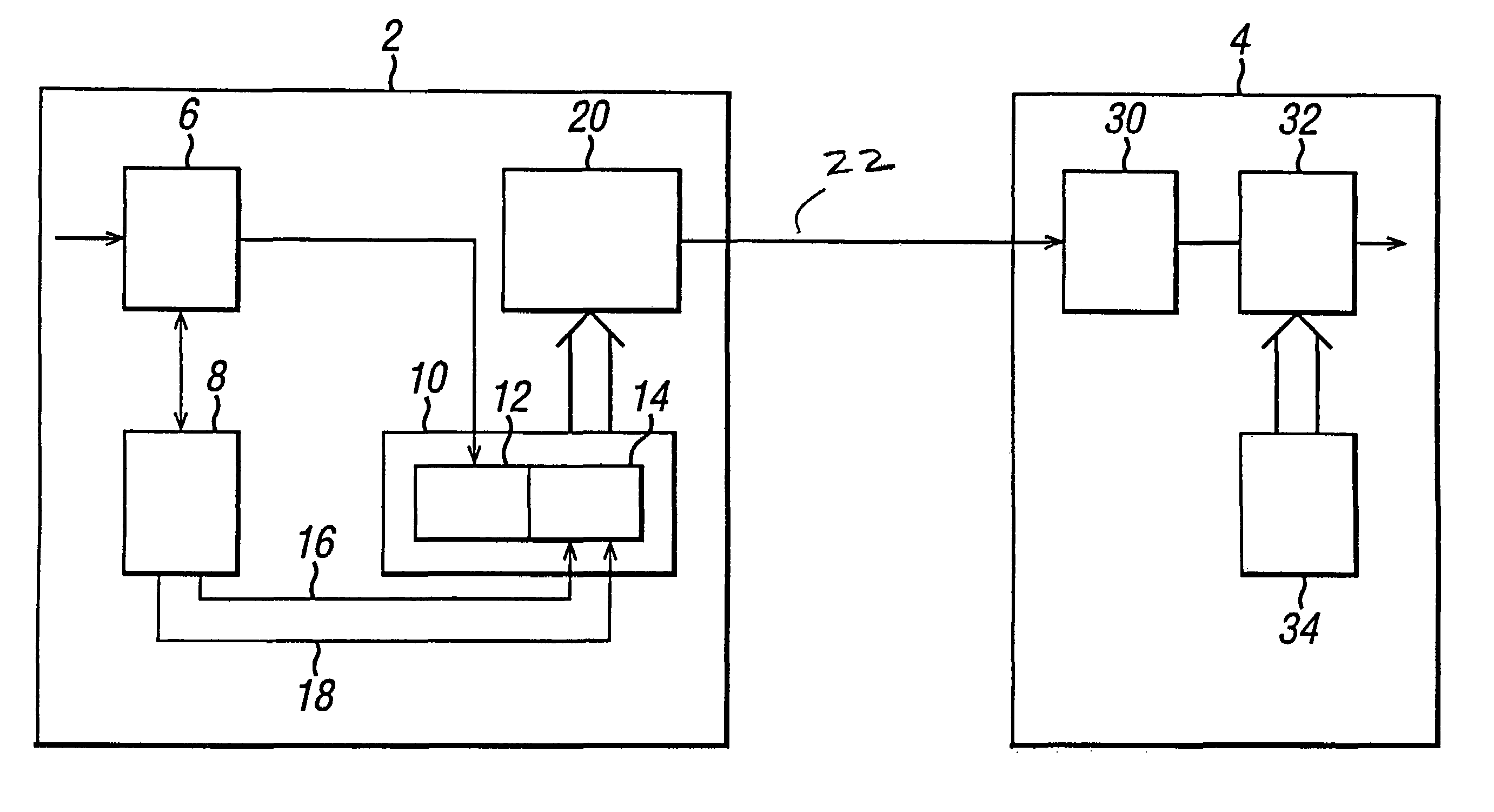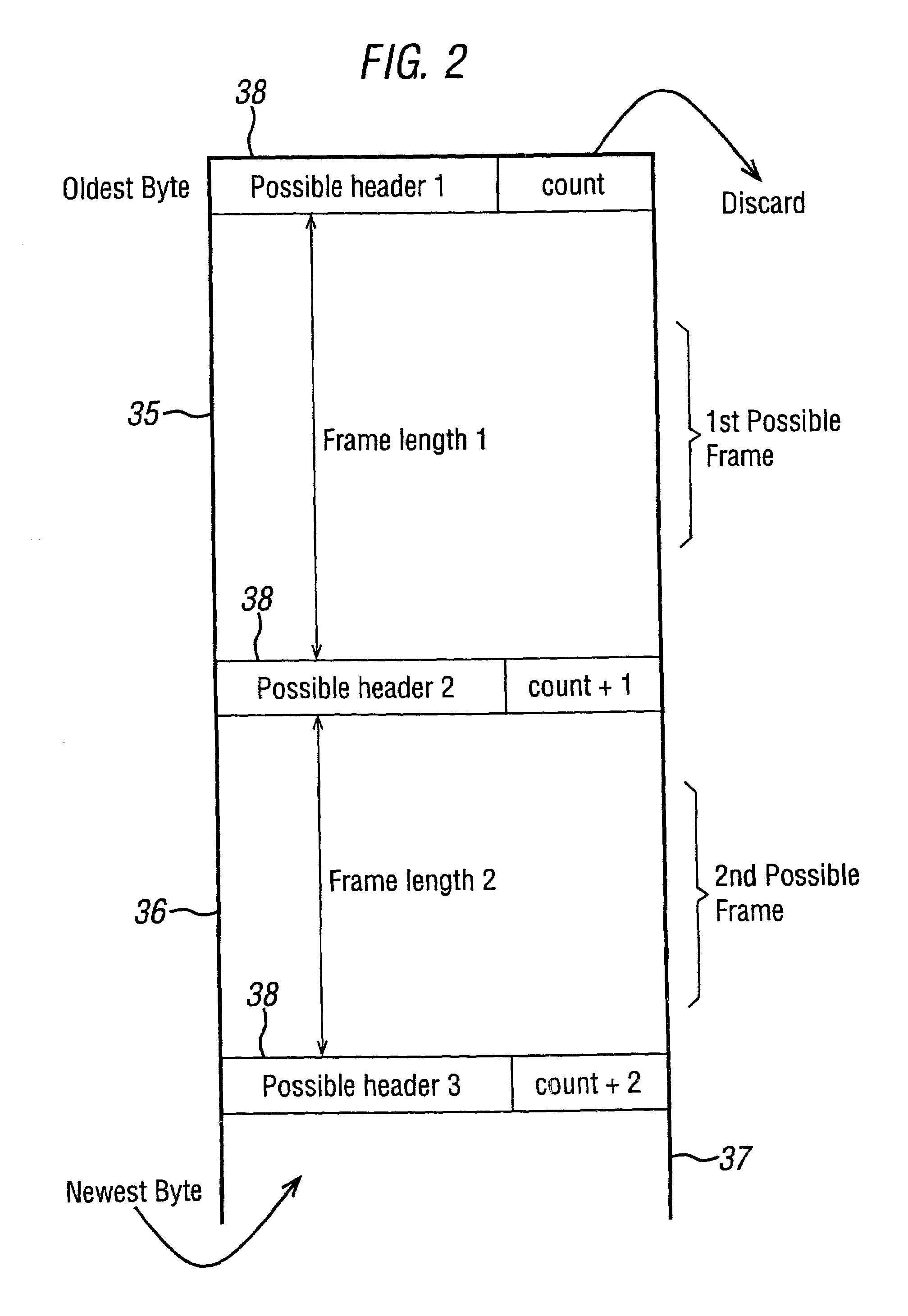Frame synchronization in data communication system
a data communication system and frame synchronization technology, applied in digital transmission, time-division multiplex, electrical equipment, etc., can solve the problems of difficult definition of a unique delimiter sequence, serial data links, and inability to tolerate the addition of hardware frame synchronisation signals on separate hardware lines, etc., to achieve low overhead, simple hardware implementation, and simple implementation
- Summary
- Abstract
- Description
- Claims
- Application Information
AI Technical Summary
Benefits of technology
Problems solved by technology
Method used
Image
Examples
Embodiment Construction
[0033]In a preferred embodiment information is transferred serially with the data organised in a byte-orientated fashion. However, the same synchronisation scheme could be used on serial data in any format. Since data is organised in bytes, some external method of identifying byte synchronisation is necessary. For example, RS232 uses start and stop bits to identify the start and end of a character and UARTs detect the presence of these bits.
[0034]A frame consists of a synchronisation byte, and one or more payload bytes. The length of the payload is unimportant, although increasing the payload length improves the efficiency of the frame structure albeit at the expense of increasing the buffer size required at the receiver. An important feature of the preferred embodiment is that the synchronisation byte contains a count value (coded sequence or pattern part) that is incremented as each frame is transmitted. The length of the count can be kept reasonably short allowing other bits in t...
PUM
 Login to View More
Login to View More Abstract
Description
Claims
Application Information
 Login to View More
Login to View More - R&D
- Intellectual Property
- Life Sciences
- Materials
- Tech Scout
- Unparalleled Data Quality
- Higher Quality Content
- 60% Fewer Hallucinations
Browse by: Latest US Patents, China's latest patents, Technical Efficacy Thesaurus, Application Domain, Technology Topic, Popular Technical Reports.
© 2025 PatSnap. All rights reserved.Legal|Privacy policy|Modern Slavery Act Transparency Statement|Sitemap|About US| Contact US: help@patsnap.com



